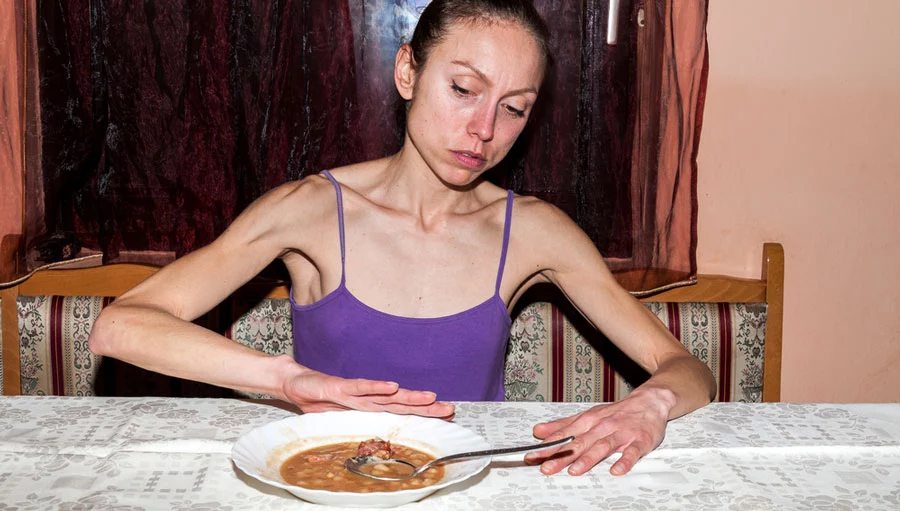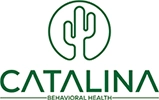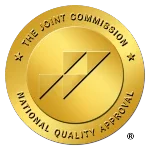Understanding Disordered Eating Habits
Eating disorders are mental health conditions characterized by abnormal eating behaviors, often driven by an intense fear of weight gain or dissatisfaction with one’s body. These behaviors can lead to severe medical complications, and in some cases, can even be fatal.
It is estimated that almost 30 million people in the United States will suffer from an eating disorder in their lifetime, making these conditions relatively prevalent mental health conditions. Eating disorders often coexist with other mental health disorders, such as anxiety, depression, and substance abuse.
While there’s no exact eating disorder test, the best way to figure out if you have an eating disorder is to understand the disorders and their signs and symptoms. Additionally, seeking professional help is highly recommended.
Keep reading to learn more about eating disorder treatment at Catalina and to better understand the symptoms involved.
Get Eating Disorder Treatment Options Now!
Eating Disorder Test: What are the Types of Disordered Eating?
Eating disorders are complex mental health conditions that can have severe physical and emotional impacts on those who suffer from them. By understanding the signs, symptoms, and behaviors associated with these disorders, we can work towards early detection, intervention, and support for those in need.
Just as with substance use disorders, there is also the possibility of relapse when addressing disordered eating, and plans to prevent such an occurrence are part of our personalized treatment plan for ED clients at Catalina.
Anorexia
Anorexia nervosa is a severe eating disorder characterized by abnormally low body weight, an intense fear of gaining weight, and a distorted perception of body shape and size. People with anorexia are often preoccupied with their body weight and shape, driving them to engage in extreme efforts to control their weight.
Signs and Symptoms of Anorexia Nervosa

- Dramatic weight loss
- Frequent comments about feeling fat or overweight
- Refusal to maintain a healthy body weight for their age and height
- Rigorous exercise routines
- Evidence of binge-eating and purging behaviors, such as self-induced vomiting or misuse of laxatives
- Drinking an unusually large amount of water or non-caloric beverages to suppress hunger
- An obsession with weight and weighing self regularly for the slightest changes
Bulimia
Bulimia nervosa is another life-threatening eating disorder characterized by recurrent episodes of binge eating, followed by compensatory behaviors to prevent weight gains, such as self-induced vomiting, excessive exercising, or abuse of laxatives.
People with bulimia often feel a lack of control over their eating habits, and their restrictive eating habits can trigger bingeing episodes.
What are the Signs and Symptoms of Bulimia Nervosa?
Recurrent Episodes of Binge Eating with a Lack of Control
A person with bulimia will frequently consume large amounts of food in short time periods. During these episodes, they will feel a lack of control and an inability to stop eating. This is different from simply overeating, as the individual is driven by intense and overwhelming urges.
2. Feelings of Disgust, Depression, or Guilt After a Binge
Following a binge, those with bulimia may experience intense negative emotions, such as disappointment, sadness, or self-loathing. These feelings can lead to further negative behaviors in an attempt to “make up” for the binge.
3. Low Self-Esteem and Hoarding or Stealing Food
Bulimia can cause extremely low self-esteem and excessive concern about one’s body image. This may lead the individual to hoard or even steal food, as well as create rituals around eating to accommodate their binging habits.
4. Evidence of Bingeing through Empty Wrappers and Containers
One telltale sign of bulimia is the presence of empty food wrappers and containers that build up after binge episodes. These often serve as visual evidence of recent binging behaviors.
Binge Eating Disorder

Binge eating disorder is another form of disordered eating characterized by excessive consumption of food without compensatory behaviors like purging or over-exercising. This condition is the most common eating disorder and affects both men and women equally.
Understanding the Symptoms of Binge Eating Disorders
1. Consuming More Food Than Intended and Feeling a Sense of Lack of Control
Individuals with binge eating disorder will often eat much more than they initially intended, going far beyond satiety and comfort. This can become a compulsive behavior, with the person feeling unable to stop even if they desperately want to.
2. Binges Occurring Even When Not Hungry or Continuing Past Fullness
Unlike normal hunger-driven eating, the binges that occur in binge eating disorder can happen without any sense of hunger. Additionally, these episodes may continue well after the individual is feeling uncomfortably full.
3. Emotional Distress Related to Binge Eating Behavior
Those with binge eating disorder often experience intense feelings of guilt, shame, and sadness after a binge. This can lead to further emotional distress or even perpetuate the bingeing cycle.
Other Specified Feeding and Eating Disorders (OSFED)
OSFED was created to diagnose individuals who did not meet the diagnostic criteria for anorexia nervosa or bulimia nervosa but still had an eating disorder. It is a serious and potentially life-threatening condition.
What Symptoms and Behaviors Are Associated with OSFED?
People with OSFED may display a range of symptoms, including:
- Frequent episodes of overeating followed by behaviors to prevent weight gain, such as self-induced vomiting.
- Signs of binge eating, include unusually large amounts of food gone in short periods of time or lots of empty wrappers and containers.
- Dieting behavior is common, such as reducing the amount or types of foods consumed.
- Evidence of purging behaviors, like trips to the bathroom after meals or the presence of wrappers or packages of laxatives or diuretics.
Avoidant Restrictive Food Intake Disorder (ARFID)

Though ARFID might share some similarities with other eating disorders, it is distinct in several ways. As mentioned earlier, the key difference between ARFID and anorexia is the absence of distress about body shape, size, or weight gain in individuals with ARFID.
- ARFID focuses on food intake restrictions based on aversions, fears, or low appetite, whereas anorexia nervosa involves intentional starvation and excessive weight loss, driven by distorted body image and fear of weight gain.
- Bulimia nervosa, another eating disorder, consists of recurrent episodes of binge eating followed by purging, excessive exercise, or fasting. In contrast, those with ARFID do not have binging or purging behaviors.
- Unlike individuals with other eating disorders, people with ARFID often have a genuine interest in food, but their intake is limited by sensory aversions and an issue with the texture of certain foods, gastrointestinal distress, or anxiety.
Immediate Help for Disordered Eating
What are the Symptoms of ARFID?
The symptoms of ARFID are diverse and can manifest in different ways. Some common symptoms include:
- Dramatic weight loss
- Limited range of preferred foods that becomes increasingly narrow over time
- Fears of choking or vomiting
- No body image disturbance or fear of weight gain unlike in other eating disorders
What is a Rumination Disorder?
Rumination disorder is a condition that is characterized by frequent regurgitation of food for at least a month. This type of eating disorder is fairly rare and is not as well-known as other eating disorders. Nevertheless, it is crucial to be aware of this condition, as it hampers the lives of individuals who suffer from it.
Associated Health Risks
Rumination disorder can lead to various health risks, including malnutrition, weight loss, dental issues, and throat irritation. Additionally, social issues may arise as those experiencing rumination disorder may feel the need to avoid social situations that involve food, leading to isolation and lowered self-esteem.
Unspecified Feeding or Eating Disorder (UFED)

UFED is a class of disorders characterized by symptoms of a feeding and eating disorder that cause distress or impairment, but do not meet the full criteria for any of the disorders in that category. UFED may not be as well-defined as other eating disorders, but it is still relevant in the field of mental health.
We hope this look has helped answer questions regarding disordered eating, and helped you determine whether further assessment is needed. Our expert Admissions team is available 24/7 to help provide a professional confirmation of diagnosis and align you or a loved one with our support services.
Get Accredited Eating Disorder Treatment Now
Overcome Eating Disorders at Catalina Today
An eating disorder is a complex mental health condition that involves unhealthy relationships with food. These disorders often lead to severe emotional, physical, and psychological damage if left untreated. If our informal eating disorder test outline has helped you recognize symptoms in yourself or someone you care about, please call for a consultation.
If you or a loved one need help getting effective treatment, we’re here for you. Contact Catalina Behavioral Health today.
All calls to our facility are completely confidential, so please reach out today to get options for a life free from issues with food and eating!





